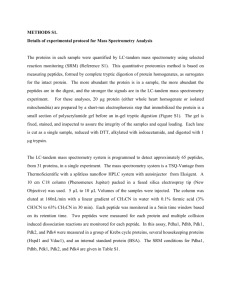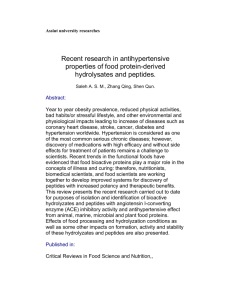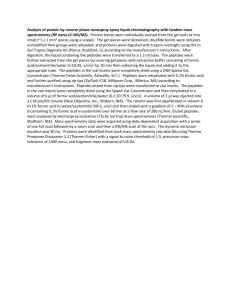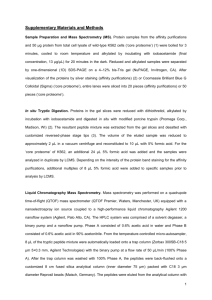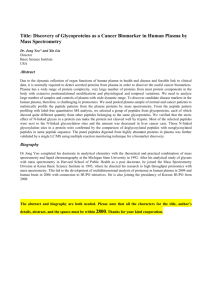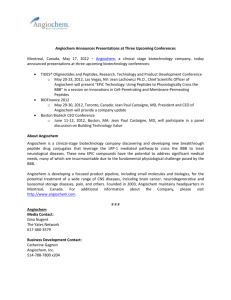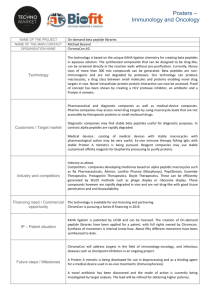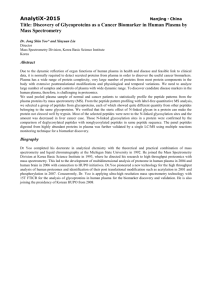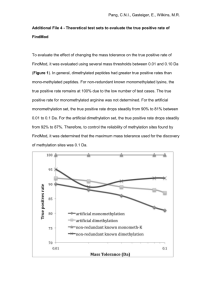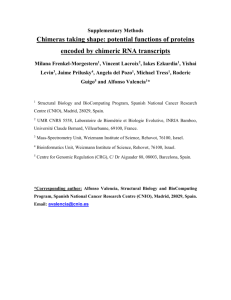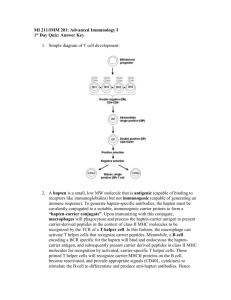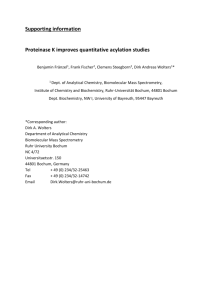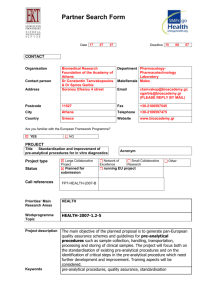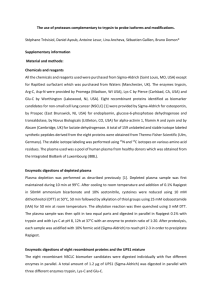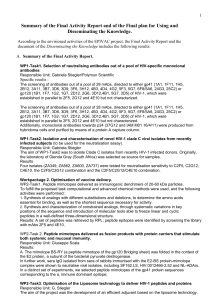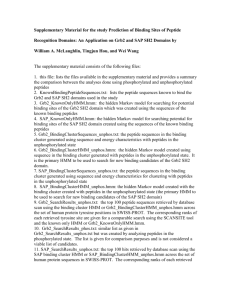2010-05-05 abstract
advertisement
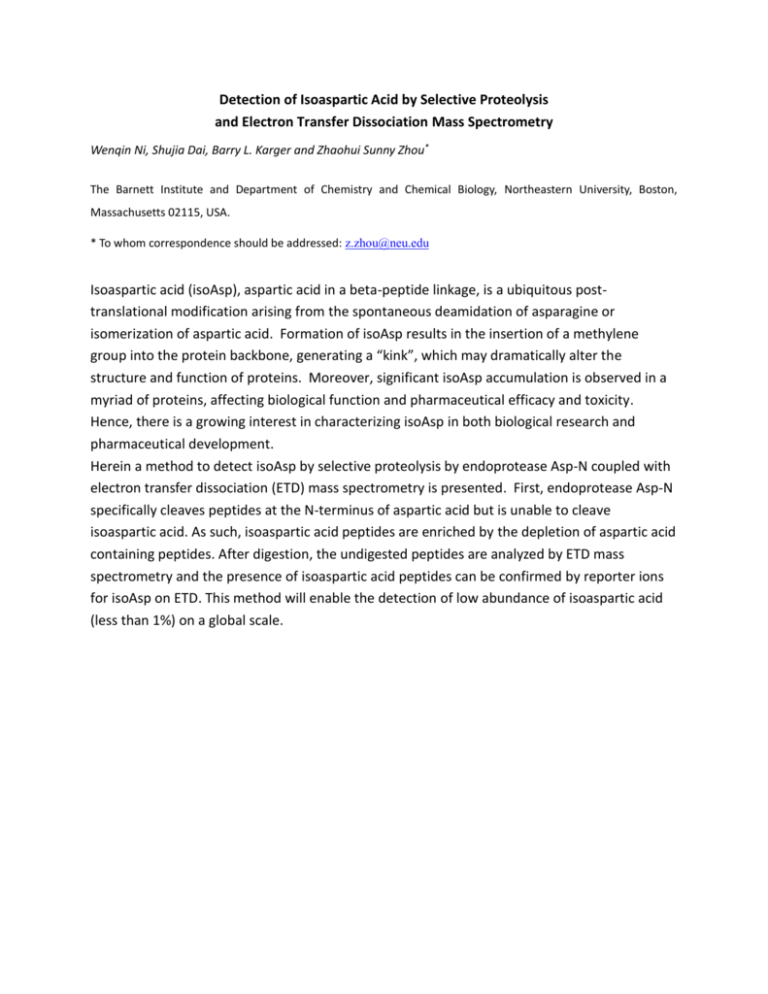
Detection of Isoaspartic Acid by Selective Proteolysis and Electron Transfer Dissociation Mass Spectrometry Wenqin Ni, Shujia Dai, Barry L. Karger and Zhaohui Sunny Zhou* The Barnett Institute and Department of Chemistry and Chemical Biology, Northeastern University, Boston, Massachusetts 02115, USA. * To whom correspondence should be addressed: z.zhou@neu.edu Isoaspartic acid (isoAsp), aspartic acid in a beta-peptide linkage, is a ubiquitous posttranslational modification arising from the spontaneous deamidation of asparagine or isomerization of aspartic acid. Formation of isoAsp results in the insertion of a methylene group into the protein backbone, generating a “kink”, which may dramatically alter the structure and function of proteins. Moreover, significant isoAsp accumulation is observed in a myriad of proteins, affecting biological function and pharmaceutical efficacy and toxicity. Hence, there is a growing interest in characterizing isoAsp in both biological research and pharmaceutical development. Herein a method to detect isoAsp by selective proteolysis by endoprotease Asp-N coupled with electron transfer dissociation (ETD) mass spectrometry is presented. First, endoprotease Asp-N specifically cleaves peptides at the N-terminus of aspartic acid but is unable to cleave isoaspartic acid. As such, isoaspartic acid peptides are enriched by the depletion of aspartic acid containing peptides. After digestion, the undigested peptides are analyzed by ETD mass spectrometry and the presence of isoaspartic acid peptides can be confirmed by reporter ions for isoAsp on ETD. This method will enable the detection of low abundance of isoaspartic acid (less than 1%) on a global scale.
